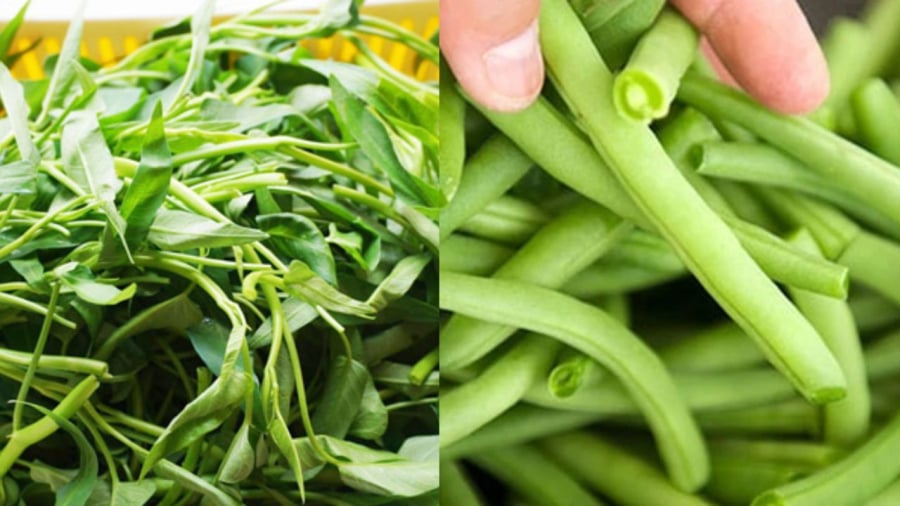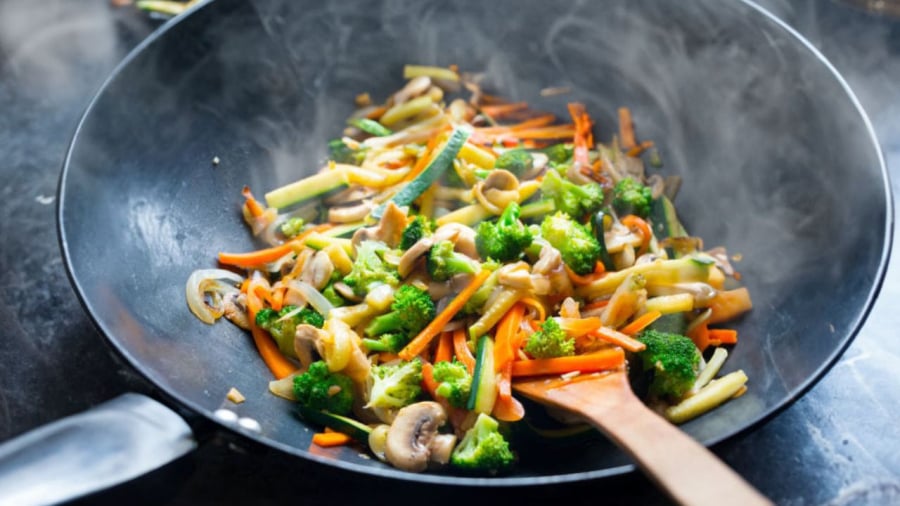A common saying in Vietnam is that “vegetables turn red like pig feed,” referring to cooked vegetables that have lost their vibrant green color. This discoloration occurs when vegetables are overcooked, resulting in the breakdown of their chlorophyll.
When stir-frying vegetables, if they turn red or black, it is due to improper cooking techniques. Not only does it affect the aesthetics, but it can also impact the taste and texture, making them unappetizing, bitter, or soggy.
The key to delicious stir-fried vegetables is retaining their vibrant green color and a glossy appearance without being greasy. To achieve this consistently, follow these steps:
Shake off excess water after washing vegetables before stir-frying
After washing vegetables, it is crucial to shake off excess water vigorously. Stir-frying wet vegetables can cause the oil temperature to drop, leading to discoloration and a soggy texture. Ensure the vegetables are dry before cooking, especially for varieties like water spinach or morning glory, as moisture will make them limp instead of crisp.

Ensure Vegetables Are Dry Before Stir-Frying
Prepare all ingredients in advance for quick stir-frying
Stir-frying is a fast cooking method, and to prevent overcooking, have all your ingredients ready. Pre-chop garlic and onions, as adding them to the wok requires quick timing. If using a sauce, have it prepared in a separate bowl for easy addition during stir-frying.
Remember to use high heat
When stir-frying vegetables, always use high heat. Ensure your wok or pan is hot enough by adding a few drops of water; if it evaporates within 1-2 seconds, it’s ready. Don’t let the pan get too hot, though.

Stir-Frying Vegetables: Remember to Use High Heat
Reduce the heat slightly before adding oil to the pan. Then, tilt the pan to coat the surface evenly. If you see smoke, the pan is too hot; let it cool down slightly. Add the garlic and onions to the hot oil, stirring until fragrant. Use a spatula or ladle to push the aromatics up the side of the pan, then add the vegetables.
If you’re not confident with this technique, remove the fried garlic and onions from the pan and set them aside. Add the vegetables to the pan and season with salt and pepper. Stir-fry quickly for about 2 minutes. Add the sauce or water around the pan’s edges, not the center, to avoid reducing the oil temperature. Continue stir-frying to allow the vegetables to absorb the sauce. You can cover the pan for a brief period (around 20 seconds) to help the vegetables cook evenly, but most of the cooking should be done uncovered to prevent discoloration.
Always stir-fry a manageable amount of vegetables that fit comfortably in your pan to ensure even heat distribution. Match the pan size to your stove; for example, a large industrial stove can handle a bigger wok, while a household stove is better suited for a smaller pan. Cooking on low heat can cause the vegetables to turn black, especially water spinach. Stir and toss the vegetables frequently to ensure even cooking and prevent discoloration.
Once the vegetables are done, add the fried garlic and onions from the side of the pan and mix well, or sprinkle them on top of the stir-fried vegetables as a garnish.
For some vegetables, like water spinach, which has a high water content and tends to turn black, you can blanch them in salted boiling water before stir-frying to reduce discoloration.




































